Database of luminescent minerals
OPALE
Chemical formula: SiO2 nH2O
Status: IMA-GP
Crystal system : Amorphous
Display mineral: OUI
Associated names (luminescent varieties, discredited names, synonyms, etc.): cacholong, hyalite, hydrophane, quincite (quincyite), geyserite, lussatite,
Luminescence:
Longwave UV (365nm) colors: |
Yellowish Green , Yellowish White , Greenish Yellow , Yellowish Green , Green , Bluish Green , Greenish white , Yellowish , | ||
Shortwave UV (254nm) colors: |
Yellowish Green , Yellowish White , Pale Yellow , Yellow , Orangy yellow , Greenish Yellow , Yellowish Green , Green , Bluish Green , Greenish white , Yellowish , | ||
Daylight picture

OPALE, Nevada, USA;
Col. G. Barmarin; Photo: G. Barmarin
Longwave (365nm) picture

OPALE, Nevada, USA; LW (365 nm).
Col. G. Barmarin; Photo: G. Barmarin
Shortwave (254nm) picture

OPALE, Nevada, USA; SW (255 nm).
Col. G. Barmarin; Photo: G. Barmarin
Pictures Galery:
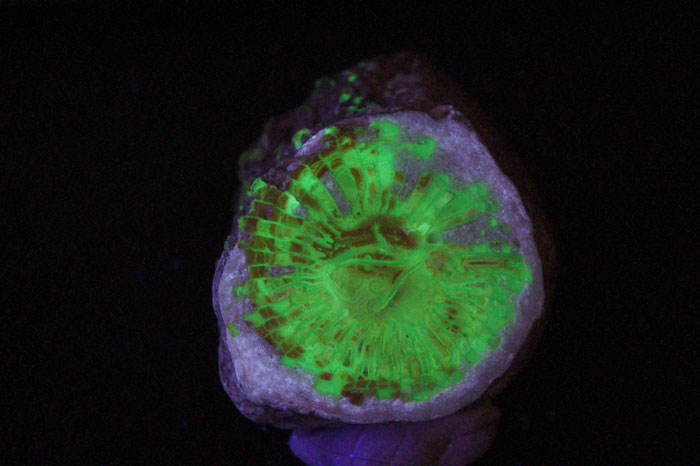
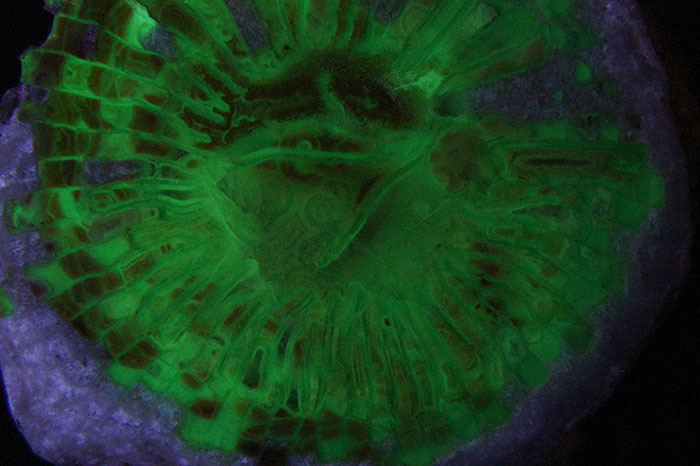
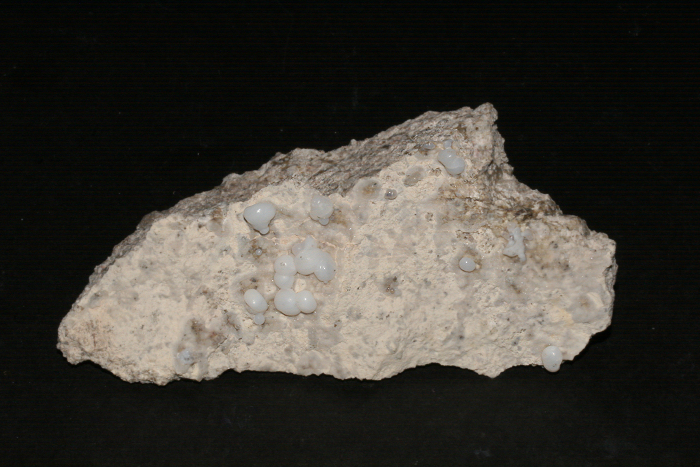
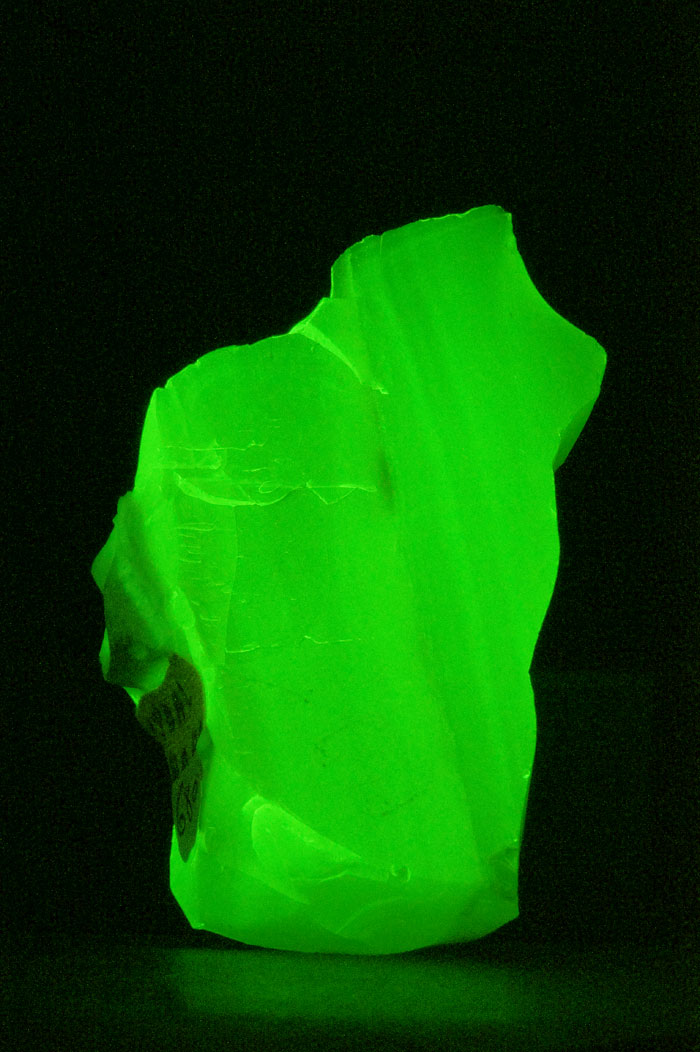 ...
...  Go to the galery (22 pictures)
Go to the galery (22 pictures)
Do you have a photo of this mineral you would like to see in the gallery? Contact us!
Phosphorescence (in the common sense of the term) observable with the naked eye:
Type d'UV |
Couleur |
Intensité |
Fréquence d'observation |
|---|---|---|---|
UV courts (254 nm): | Greenish Yellow | Strong | Rarely |
Activator(s) and spectrum:
Activator(s): (UO2)2+ (ion Uranyle) en impureté,
Peaks in the spectrum (nm):
UO22+ : 504nm, 524nm, 547nm, 569nm, 601nm (opale Nevada, USA)
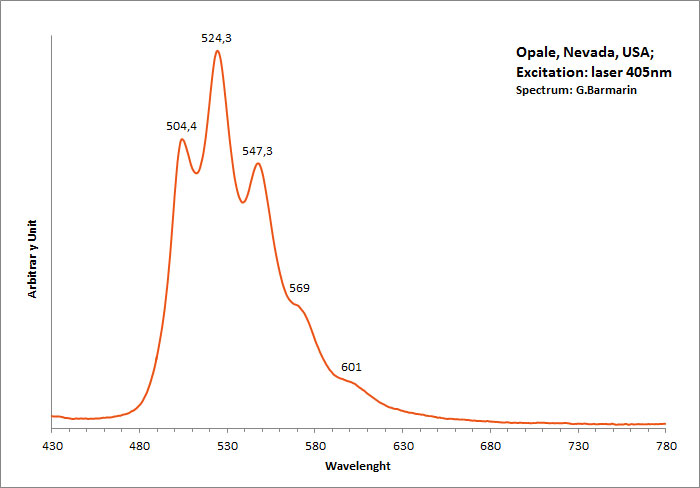
Col. G. Barmarin; Spectre: G. Barmarin
Spectrum of OPALE in CSV
You can download the CSV file by clicking here: fichier csv
Spectrum Galery:

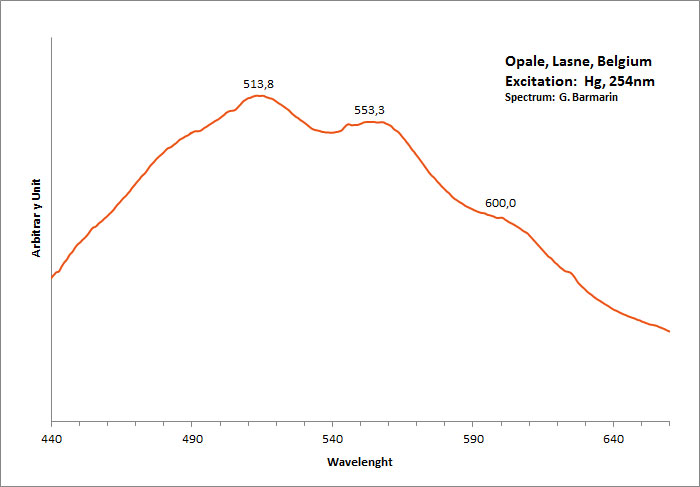
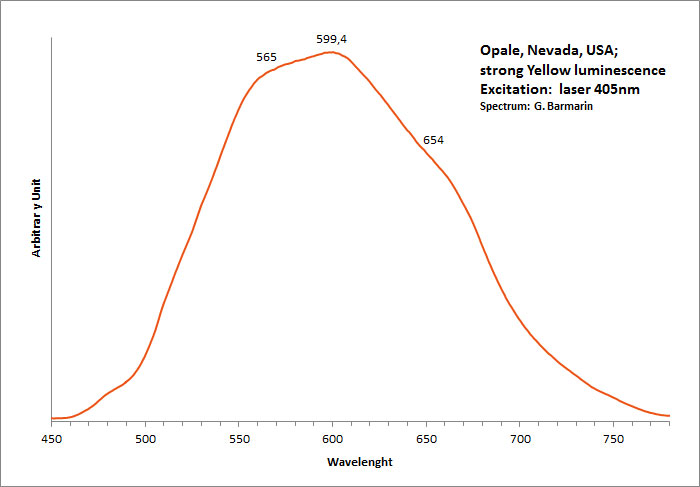 ...
...Comments on spectrum and activators:
Green luminescence related to uranium impurities.
Georges O. Wild from Idar Oberstein in Germany found as early as 1947 that the greenish yellow fluorescence of opal from Virgin Valley, Nevada was due to uranium traces and being identical of the fluorescence of the synthetic gemstone Emerada (synthetic spinel).
Wild cites a weak band at 600 to 605nm, strong band at 570 to 578nm, strong band at 545 to 550nm, medium band at 522 to 527nm and weak band at 500 to 503nm.
Before Wild, DeMent has already studied the spectrum of opal s luminescence before Wild but not as precisely.
Best localities for fluorescence (*):
- Virgin Valley, Denio, Humboldt county, Nevada, USA (butterscotch colored common opal, strong green SW);
- Andamooka opal fields, Andamooka Ranges, Stuart Shelf, South Australia, Australia (weak white fluo);
- Stone Montain, Georgia, USA (strong yellow + yellow green phosphorescence);
- Crestmore, Ca, USA (strong yellow + yellow green phosphorescence);
- McLaughlin Mine (Manhattan Mine), Knoxville, Knoxville District, Napa Co., California, USA (yellow SW);
- Chalk Mountain Mine, Spruce Pine District, Avery Co., North Carolina, USA (green SW)
(*)The data are not exhaustive and are limited to a few remarkable localities for fluorescence
Bibliographic reference for luminescence:
- The Henkel Glossary of Fluorescent Minerals, Dr. Gerhard Henkel, Published by the FMS, 1989 ,
- Fluorescence: Gems and Minerals Under Ultraviolet Light, Manuel Robbins, 1994, Geoscience Press, ISBN 0-945005-13-X ,
- The World of Fluorescent Minerals, Stuart Schneider, Schiffer Publishing, 2006, ISBN 0-7643-2544-2 ,
- Handbook of Fluorescent Gems and Minerals, a practical guide for the gem and mineral collector, Jack de Ment, 1949 ,
Reference for luminescence on the Internet:
- The Langesundsfjord: history, geology, pegmatites, minerals, Alf Olav Larsen, Bode Verlag Gmbh, 2010 ISBN 978-3-925094-97-2
- Virgin Valley Opals
- Symposium on Agate and Cryptocrystalline Quartz, Golden, Colorado, USA, 2005
Images:
Videos:
Mineralogical reference on the Internet:
 http://www.mindat.org/show.php?name=Opale
http://www.mindat.org/show.php?name=Opale
 http://webmineral.com/data/Opale.shtml
http://webmineral.com/data/Opale.shtml
Internet Search:
 Image search on 'Google Images'
Image search on 'Google Images'
 Search for documents in all languages on Google
Search for documents in all languages on Google
A request providing no result means only that no such reference exists in the database, but it does not mean that what you are looking for does not exist, just not to our knowledge. If you think you have found an error or omission, please let us know via the contact page being sure to cite the source of information.
